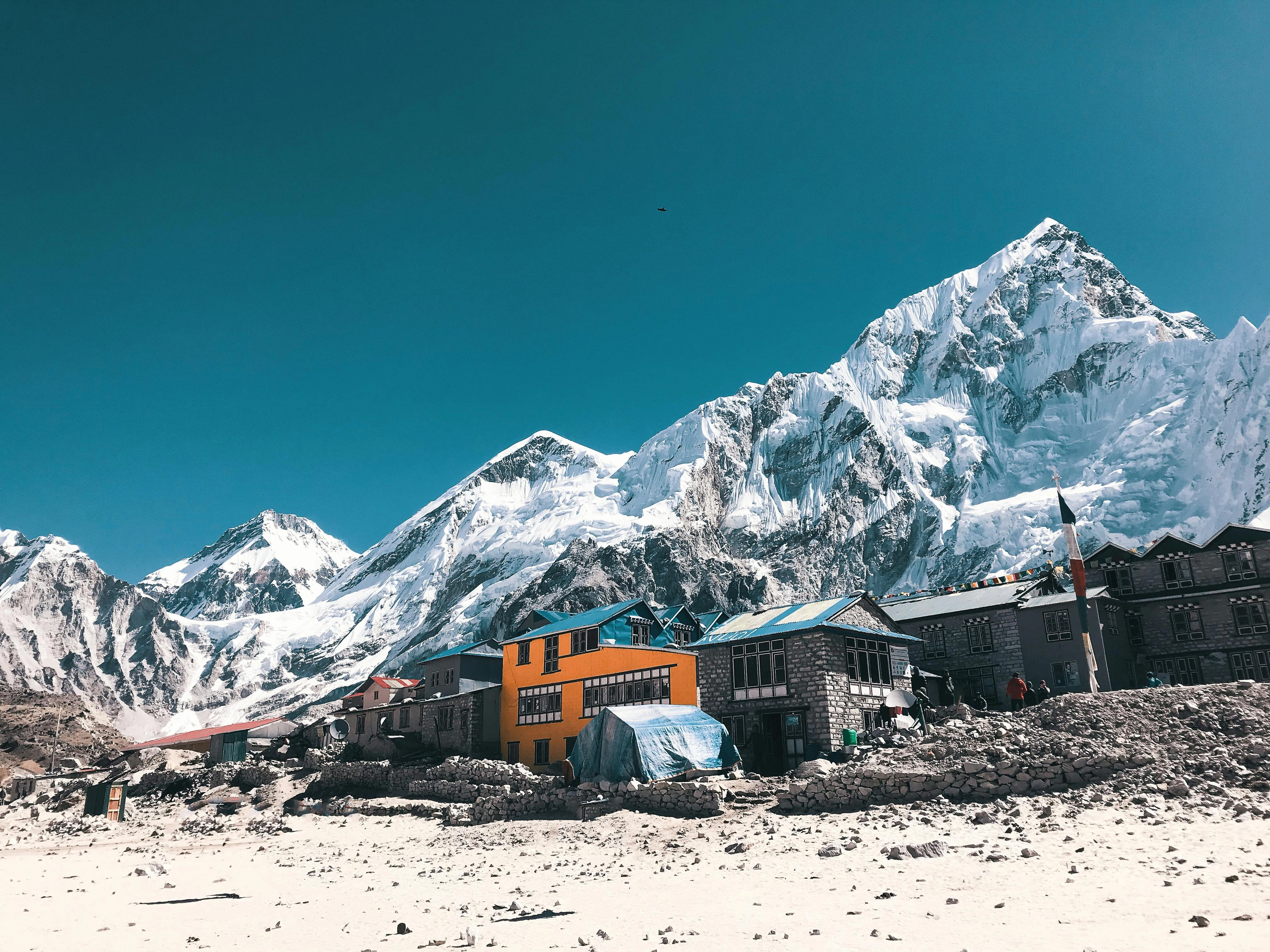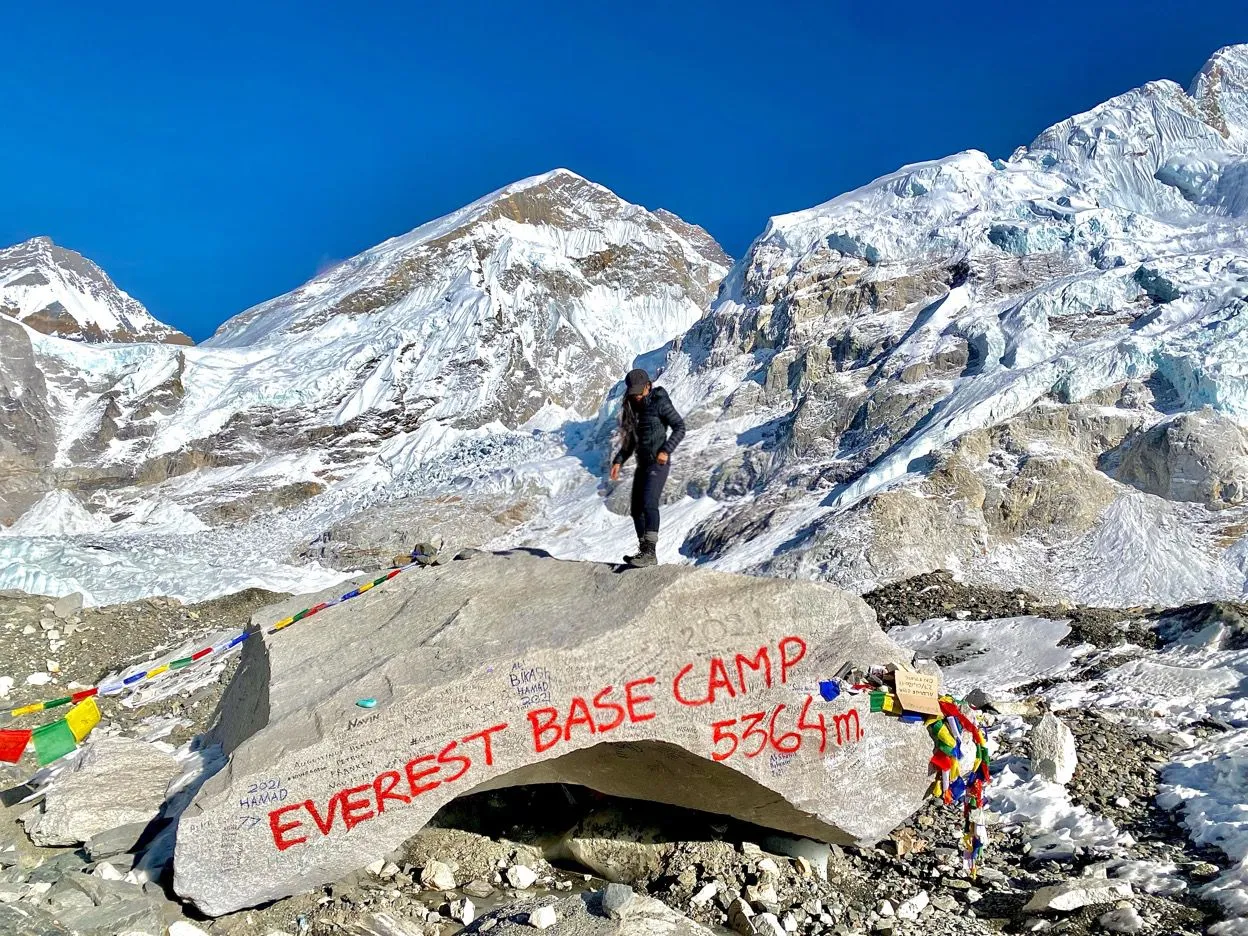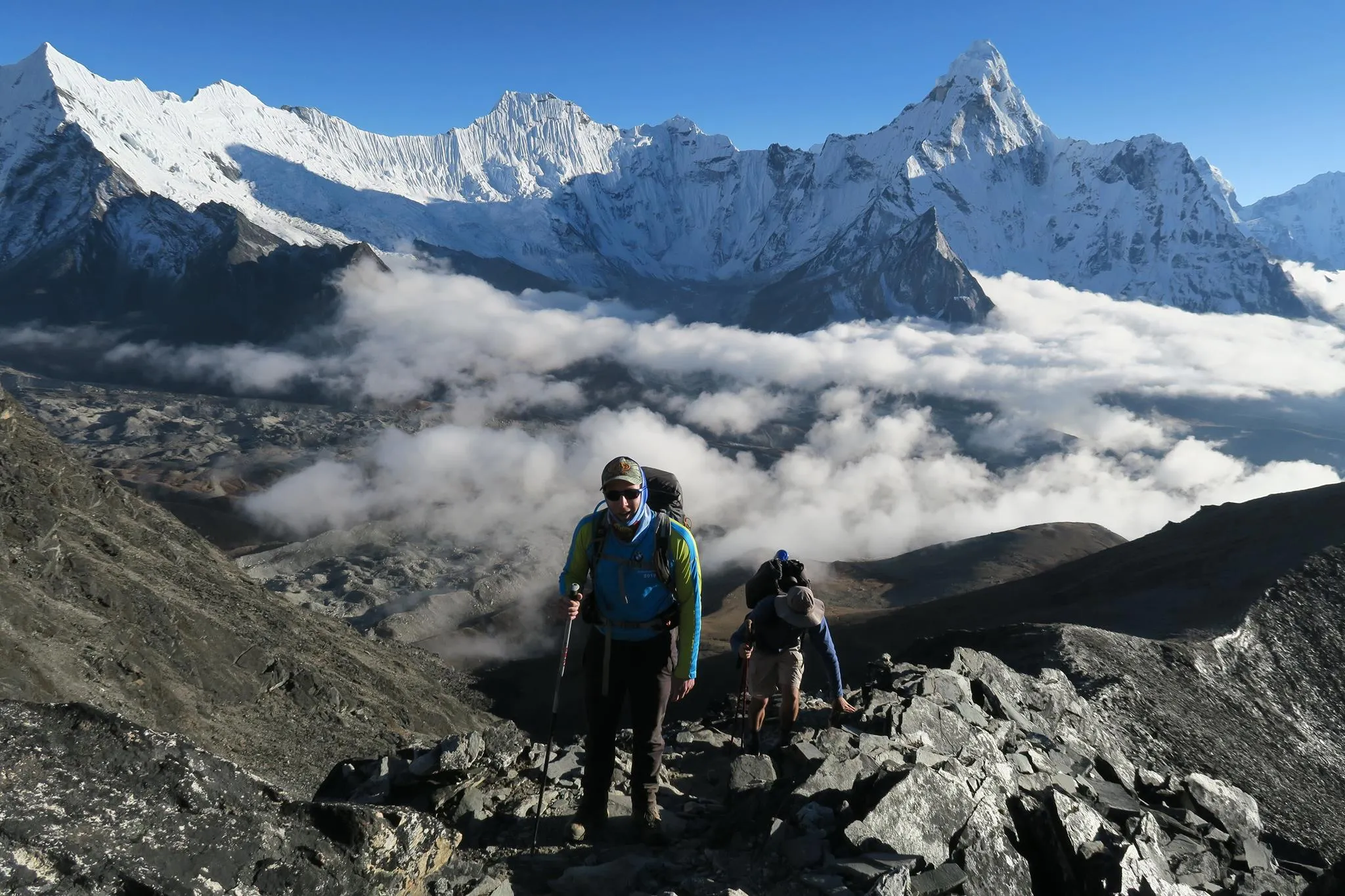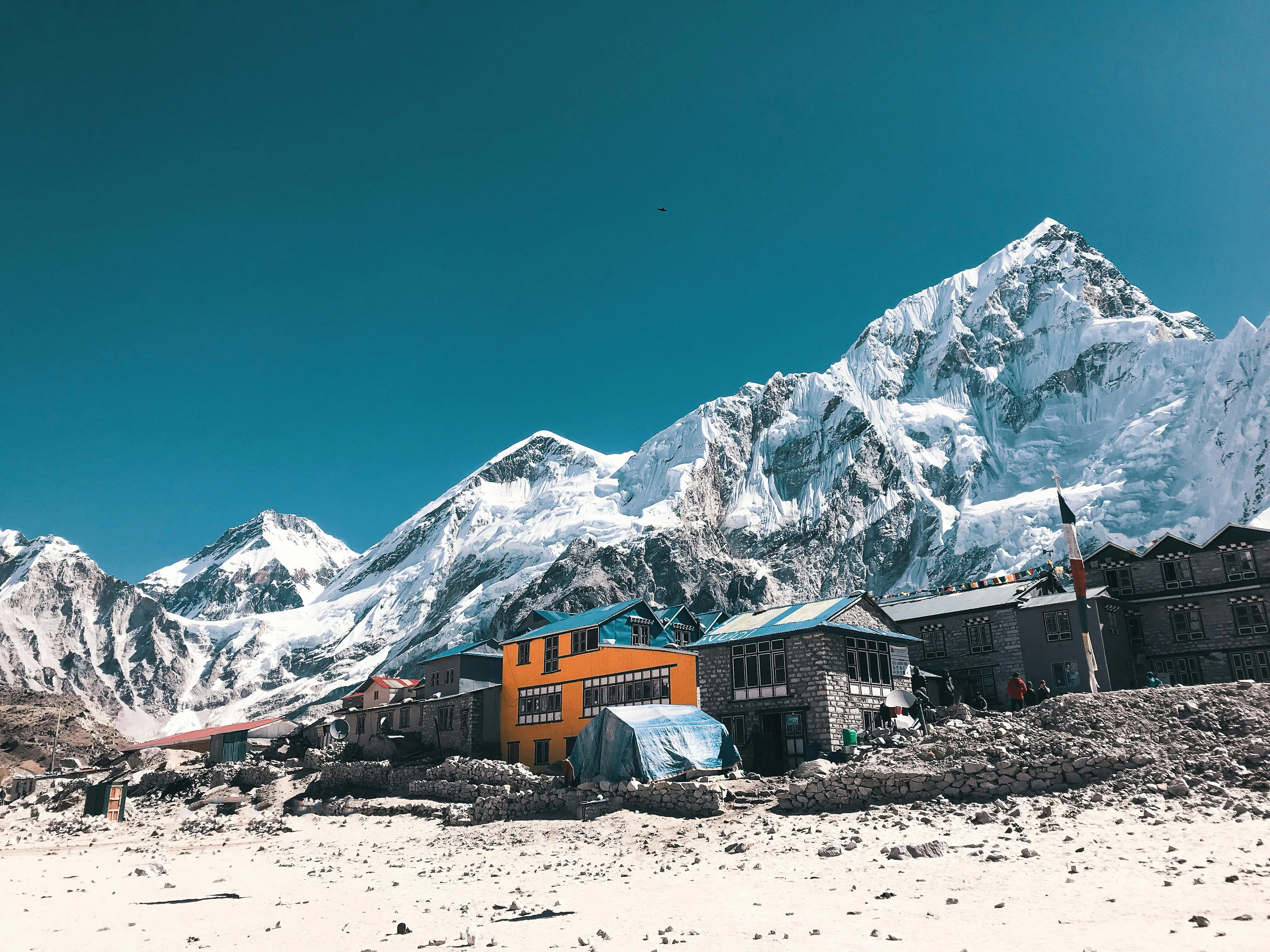Day Gokyo Lakes Trek - Trekking
Trip Highlights
-
Set out on the Gokyo Lakes Trek, a peaceful, less-traveled path compared to Everest Base Camp, ideal for nature enthusiasts and thrill-seekers.
-
Savor a thrilling 30-minute flight to Lukla, touching down at one of the world’s most exciting airstrips.
-
Gaze at the turquoise Gokyo Lakes, the highest freshwater lakes, framed by the awe-inspiring Himalayas.
-
Climb Gokyo Ri (5,357m elevation) for stunning views of Mt. Everest, Lhotse, Makalu, Cho Oyu, and the vast Ngozumpa Glacier.
-
Dive into Sherpa traditions, wandering Namche Bazaar and quaint villages like Phakding, Dole, and Machhermo.
-
Journey through UNESCO’s Sagarmatha National Park, rich with wildlife, plants, and sacred Buddhist monasteries and mani walls.
-
Admire the tranquil Dudh Koshi River, swaying suspension bridges, and colorful rhododendron forests on the way to Gokyo Valley.
-
Feel the spiritual essence of the Gokyo Lakes, sacred to Hindus and Buddhists, especially during the Janai Purnima festival.
Trip Overview
The Gokyo Lakes Trek is an unforgettable 15-day adventurous trekking journey in Nepal’s Khumbu region, a quieter alternative to the busy Everest Base Camp trail. It blends breathtaking alpine views, deep Sherpa traditions, and the stunning beauty of six turquoise, glacier-fed Gokyo Lakes, nestled at 4,700-5,000m elevation in Sagarmatha National Park. Perfect for those craving solitude and majestic Himalayan scenery, this trek offers adventure, spirituality, and natural wonder.
Your adventure starts with an exhilarating flight from Kathmandu to Lukla, followed by treks through charming Sherpa villages like Phakding and Namche Bazaar, the lively heart of the Everest region. The trail meanders along the Dudh Koshi River, past colorful prayer flags, ancient monasteries, and rhododendron forests, with chances to spot Himalayan tahr or rare snow leopards. Rest days in Namche Bazaar let you soak up Sherpa culture, visit historic Khumjung village, or glimpse Mt. Everest from the Everest Viewpoint.
The path splits from the EBC route at Kyanjuma, guiding you through quiet villages like Dole and Machhermo to the Gokyo Valley. Here, the dazzling Gokyo Lakes, including sacred Dudh Pokhari and Thonak Lake, shine beneath peaks like Cho Oyu. The trek’s highlight is scaling Gokyo Ri, where a sunrise climb unveils a jaw-dropping view of Everest, Lhotse, Makalu, Cho Oyu, and the sprawling Ngozumpa Glacier, the Himalayas’ longest.
This moderately tough trek demands solid fitness and mental readiness for high elevations and 5-7 hour daily hikes. Cozy Sherpa teahouses serve tasty local dishes and warm hospitality, making each stop a cultural gem. Whether drawn to the lakes’ spiritual charm, the thrill of high-elevation hiking, or Nepal’s untouched beauty, the Gokyo Lakes Trek delivers a life-changing adventure that captures the Himalayas’ heart.
Trip Itinerary
Day 1: Arrival in Kathmandu and Drive to the Hotel
Friendly staff welcome you at Tribhuvan International Airport in Kathmandu. They guide you to a cozy hotel nearby. The quick drive showcases lively markets, ancient temples, and bustling street scenes. A refreshing welcome drink greets you at check-in. Your guide shares trek details and reviews your gear.
Kathmandu hums with a mix of tradition and modern life on its colorful streets. Ancient stupas and temples rise around you. Prayer flags sway, teasing the Himalayan journey ahead. Stroll vibrant Thamel, browsing shops and quaint cafes. Unwind at the hotel, buzzing with trek excitement.
Day 2: Kathmandu Valley Sightseeing with Trek Preparation
Day 3: Fly to Lukla (2,850m elevation) and Trek to Phakding (2,610m elevation)
Day 4: Trek from Phakding to Namche Bazaar (3,440m elevation)
Day 5: Acclimatization Day in Namche Bazaar
Day 6: Trek from Namche to Dole (4,200m elevation)
Day 7: Trek from Dole to Machhermo (4,470m elevation)
Day 8: Trek from Machhermo to Gokyo (4,800m elevation)
Day 9: Hike to Gokyo Ri (5,357m elevation) and explore Fifth Lake
Day 10: Trek from Gokyo to Dole
Day 11: Trek from Dole to Namche Bazaar
Day 12: Trek from Namche to Lukla
Day 13: Fly Back to Kathmandu
Day 14: Buffer Day in Kathmandu
Day 15: Fly Back Home
Include/Exclude
Cost Includes
-
Airport pickup and drop-off in Kathmandu with private vehicles.
-
Two nights’ cozy hotel stay in Kathmandu (twin-sharing).
-
Round-trip scenic flights from Kathmandu to Lukla.
-
All meals (breakfast, lunch, dinner) during the trek.
-
Teahouse lodging during the trek (twin-sharing rooms).
-
Friendly, licensed English-speaking trekking guide.
-
Porter service (1 porter for 2 trekkers, max 15kg).
-
Sagarmatha National Park permit and TIMS card.
-
Trekking map, duffel bag, and completion certificate.
-
First aid kit and emergency oxygen supply.
-
All government taxes and service charges.
Cost Excludes
-
International flights to and from Kathmandu.
-
Nepal visa fees and personal travel insurance.
-
Personal expenses like drinks, snacks, or hot showers.
-
Tips for guides, porters, and drivers.
-
Personal trekking gear and equipment.
-
Meals in Kathmandu, except breakfast.
-
Optional activities like extra sightseeing or mountain flights.
-
Costs from flight delays or itinerary changes.
Essential Info
Best Seasons for the Gokyo Lakes Trek
Planning the Gokyo Lakes Trek? The timing of your adventure makes a massive difference, not just in terms of scenery, but also safety, comfort, and the overall vibe of your journey. With high-altitude passes, glacier-fed lakes, and panoramic Himalayan views, choosing the right season is key to enjoying the trek to its fullest. While the Gokyo region remains accessible throughout the year, some months offer more favourable weather, clearer skies, and better trail conditions than others.
Here’s how each season stacks up for trekking to Gokyo Lakes:
Spring (March to May)
Spring is one of the most pleasant times to trek the Gokyo Lakes route. Warmer temperatures and blooming rhododendrons brighten the lower trails, creating a vibrant landscape. Clear skies provide spectacular views of Everest, Lhotse, Cho Oyu, and the glistening Gokyo Lakes. With longer daylight hours, trekkers can move at a relaxed pace without feeling rushed. Although the trails see a moderate number of visitors, teahouses remain fully open and well-stocked. This season is perfect for nature lovers, photographers, and first-time trekkers looking to experience the Himalayas in full bloom.
Autumn (Late September to November)
Autumn follows the monsoon, bringing some of the clearest and most stunning mountain views in the Himalayas. The dry, stable weather makes it the safest season for high-altitude trekking. This period also coincides with major Nepali festivals like Dashain and Tihar, offering a unique cultural experience alongside the adventure. Cooler mornings and evenings create a cozy atmosphere in mountain lodges, ideal for unwinding after a day’s hike. Due to its popularity, this season attracts many trekkers, so early bookings are highly recommended.
Monsoon (June to August)
The monsoon season is marked by heavy rain, making trails slippery and increasing the risk of landslides and flight delays. Frequent cloud cover often obscures the breathtaking mountain views, which can be disappointing for photographers and sightseers. On the upside, the forests are lush and vibrant, and the trails are less crowded, offering solitude for those who prefer quieter hikes. However, this season is generally suitable only for experienced trekkers who are prepared to face wet and challenging conditions.
Winter (December to February)
Winter trekking to Gokyo Lakes is a unique experience, perfect for those seeking solitude and snowy landscapes. The temperatures drop below freezing at night, and trails may be icy or snow-covered, requiring proper winter gear and trekking expertise. Some high-altitude lodges close for the season, so accommodation options become limited. Despite these challenges, the crystal-clear skies provide breathtaking views, and the lodges that remain open offer a warm, welcoming refuge for winter adventurers.
Food and Accommodation during the Gokyo Lakes Trek
Along the Gokyo Lakes Trek, you’ll find cozy teahouses that provide a warm and welcoming refuge after each day’s adventure. Generally, accommodations offer simple yet comfortable twin-sharing rooms, mostly with shared bathroom facilities. However, at larger stops like Namche Bazaar, private bathrooms are sometimes available for a small additional fee. The lodges are typically clean and well-maintained, with friendly local staff who ensure your stay is both restful and pleasant.
When it comes to food, the menus offer a delicious mix of traditional Nepali and Tibetan dishes, thoughtfully designed to keep you energized throughout your journey. You can expect staples like dal bhat (rice and lentil soup), savory momos (dumplings), and freshly baked Tibetan bread. In addition, many teahouses serve eggs, pasta, noodles, and simple Western dishes to cater to diverse preferences. Moreover, tea, coffee, and safe drinking water are widely available, usually for a small fee or through purification methods.
Although the food remains hearty throughout the trek, it’s important to note that as you ascend to higher elevations, meal variety and ingredients may become more limited due to supply challenges and harsher weather conditions. Nevertheless, the comforting meals paired with warm Himalayan hospitality make for a memorable and satisfying dining experience on this remarkable trek.
Transportation for the Gokyo Lakes Trek
The trek starts with a 30-minute flight from Kathmandu or Manthali to Lukla’s Tenzing-Hillary Airport. Peak seasons may use Manthali due to Kathmandu’s air traffic. The flight reveals stunning Himalayan vistas and a thrilling landing. Return flights link Lukla to Kathmandu. In Kathmandu, private vehicles handle airport transfers and tours. Flight delays are possible, so a buffer day helps.
Preparation Tips for the Gokyo Lake Trek
Trekking to Gokyo Lakes at 5,357m elevation tests your physical and mental strength. The remote Himalayan trail demands acclimatization and preparation. Whether new or experienced, prepping your body and mind ensures a safe, fun journey. Good planning lets you fully enjoy the lakes and peaks.
Here are key tips for the Gokyo Lake Trek:
-
Train 6-8 weeks early, focusing on cardio, leg strength, and stamina. Stair climbing or uphill walking helps.
-
Practice multi-day hikes with a backpack to get used to trekking conditions.
-
Break in trekking boots early to avoid blisters on the trail.
-
Learn about altitude sickness, its symptoms, and how to handle them.
-
Stay hydrated and eat well to ease elevation challenges.
-
Use acclimatization days to rest and take short hikes for adjustment.
-
Pack light, layered clothing for changing Himalayan weather.
-
Build mental toughness for unexpected weather or flight delays.
-
Talk to a doctor about health conditions and altitude meds like Diamox.
Gokyo Lake Trek Packing List
Clothing
-
Thermal base layers (tops and bottoms).
-
Warm fleece or down jacket.
-
Waterproof jacket and pants.
-
Trekking pants and moisture-wicking t-shirts.
-
Warm hat, sun hat, inner and outer gloves.
-
Wool socks and underwear.
-
Scarf or buff for dust protection.
Personal Items
-
Sleeping bag (rated for -10°C or lower).
-
Quick-dry towel and eco-friendly toiletries.
-
Sunscreen, lip balm, and moisturizer.
First Aid & Health
-
Personal medications and Diamox for elevation.
-
Painkillers, antiseptic cream, band-aids, blister kits.
-
Water purification tablets or a filter.
Electronics & Documents
-
Headlamp with extra batteries.
-
Power bank, adapter, and charging cables.
-
A camera or a phone for capturing memories.
-
Passport, permits, travel insurance, and copies.
Book the Gokyo Lake Trek with Mercy Holidays! (Link)
Trekking to Gokyo Lakes isn’t just a trip; it’s a life-changing experience. With shimmering lakes, soaring peaks, and warm Sherpa villages, this adventure leaves lasting memories. Mercy Holidays ensures a safe, joyful journey with expert guides and careful planning. Reach out or visit our office in Maharajgunj, Kathmandu, to book today!
FAQ
Is prior trekking experience required for the Gokyo Lake Trek?
How difficult is the Gokyo Lake Trek?
Is the Gokyo Lake Trek safe?
Do I need permits for the Gokyo Lake Trek?
What is the highest point of the Gokyo Lake Trek?
What type of accommodation is available?
Can I charge my devices along the Gokyo Lake Trek?
Is Wi-Fi available?
What’s the food like on the Gokyo Lake Trek?
What’s the risk of elevation sickness?
Do I need a guide or porter?
How cold does it get?
Can I do the trek solo?
What’s the emergency evacuation process?
Reviews
No reviews found.



